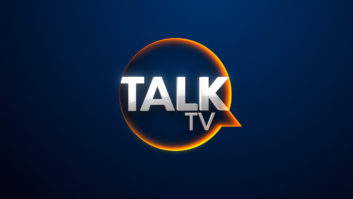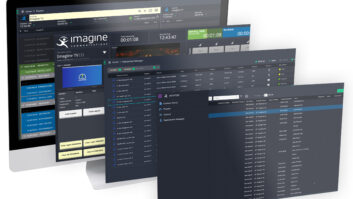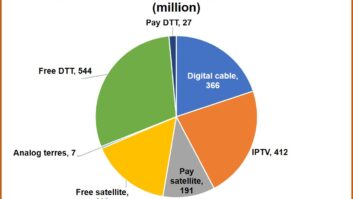The phrase ‘game-changer’ is used perhaps a bit too often in our industry, but it’s undeniable that in recent years on-demand streaming services have upended the business entirely, ushering in a new era and new volumes of content, and putting traditional broadcasters under pressure like never before.
Where the main competition for eyeballs used to come from cinema, or latterly from gaming; now it’s from ‘within’. But whilst on-demand viewership may be accelerating around the world, linear remains critical to broadcasters’ top lines.
Take for example the 2022 World Cup; the tournament on linear cable and broadcast channels combined to deliver over 9.5 billion verified household TV ad impressions, representing a 28.9 per cent increase vs. the 2018 World Cup coverage. With this reach, linear TV still remains one of the best ways for advertisers to target genuinely large audiences.
It’s no real surprise then that when you look at the figures in detail, as Omdia did in their IBC 2022 exclusive report: The Advertising Revolution, you find that linear TV is predicted to remain critical to broadcaster top lines. Here, they outlined that advertising on traditional linear TV broadcasts will still account for over two-thirds of TV broadcaster advertising revenue in 2027. And while all media suffered during the pandemic and the consequent global ad pullback, in 2021 global ad spends on linear TV bounced back, with television advertising forecast to have grown 4 per cent globally in 2022. And yes, the spectacular pandemic viewing gains have receded, but they were only ever going to be a spike in the charts. The underlying trend is still a healthy one and the main family TV screen remains the most valuable way for audiences to consume TV content and therefore, the most efficient way for advertisers to reach them.
Whilst the grass is exceedingly green on the streaming side of the fence, especially with the launch of high-profile new AVoD options from the likes of Netflix and Disney Plus, advertisers and rights-holders are keeping linear TV firmly in mind when it comes to choosing appropriate avenues to increase revenues.
The implications for broadcasters
One of the key buzzwords that has been spun out of the move towards digital transformation across all industries is agility, and that is precisely the same for broadcast. Even though linear TV has been around for decades, it does not mean that it has to continue to run on legacy technology.
And to that drive to digital, we can add the importance of cost-effectiveness. Broadcasters everywhere are having to streamline their operations and do more with less, satisfying their audience’s demands for new content and new means of consuming it within the same budgetary requirements, or even bigger constraints, than in previous years.
Linear TV has been a constant in a changing world, for consumers and broadcasters alike. When built on robust adaptable solutions, it helps drive efficiencies in personnel / real estate, as well as meet the challenges of an evolving marketplace by providing a revenue stream for investment across the wider business.
The challenge to optimise operational efficiencies while retaining capability and future flexibility is what fuels the shift towards technologies that enhance workflow orchestration, automation, and data analytics. With this technology, broadcasters are able to understand and respond to their audiences like never before, and to run their operations with an efficiency that their engineers would only have dreamt of a generation previously.
As an automation playout provider, Pebble can help drive the efficiencies in linear that keep that vital ad revenue coming in. This enables broadcasters to continue to invest in their digital offerings. It’s not about ignoring streaming or discounting linear, it’s about developing a strategy that can accommodate both; the reliability and revenue of one with the future-facing rapid iteration of the other.
The game might indeed have changed a lot during the past decade, but not for all viewers and not in all countries. Linear TV still very much has a place and remains a powerful engine and revenue stream that can help drive further innovation in the industry.







